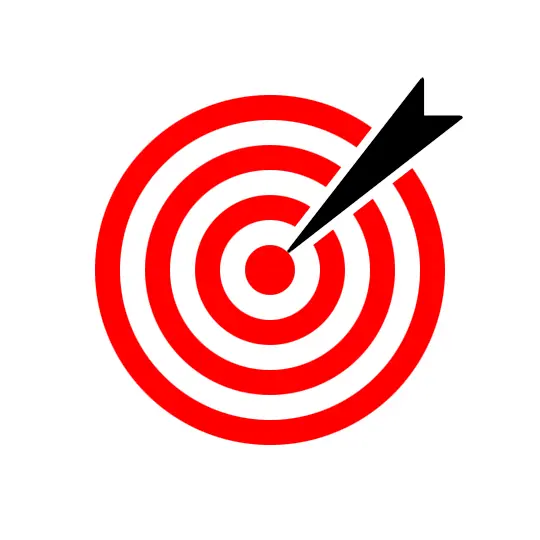Identify your Audience, Persona, and Goals
Whether you are launching a new online business or taking an existing business online, identifying your audience, persona, and goals is essential to your success. In this article, I will be breaking down how to identify those key elements, but first, let's discuss what they mean and why they are essential when building an online business.
Audience:

A target audience, also referred to as a target market, is a group of people that share similar characteristics and needs that your brand, services, products, and/or content aim to solve. This is the group of people that will be most helped by the niche or area of specialty your business is centered around.
Benefits of Identifying Your Audience:
- It ensures you are creating the right content, services, and/or products for the right people.
- It allows you to spend your marketing dollars more effectively.
- It helps you focus your effort, time, and money by honing in on who you are trying to reach vs. trying to reach everybody.
Persona:
A persona, also referred to as an avatar in the online marketing world, is a fictional profile representing your ideal consumer. It takes the target audience one step further by personifying a fictional individual or individuals to give you a deeper understanding of their needs, challenges, and pain points.
Benefits of Identifying a Persona:
- It allows you to dive deeper into your target market's minds when you take the time to personify an individual and what they are specifically looking for
- It helps you tailor your messaging when you know who you are speaking to
- It humanizes your audience
Goals:
A goal is an aim or desired result to which effort is directed. While most people are familiar with what goals are, very few people take the time or understand how to set them correctly. Properly set and outlined goals are paramount to business success.
Benefits of Identifying Your Goals:
- They provide a clear understanding of what your company is trying to accomplish.
- They help maintain motivation when there are setbacks.
- They provide focus and accountability to your daily task.
How to identify your target audience:

Researching and defining your target audience is the first and most crucial step for creating and running a successful online business. Before you do any marketing, it is essential to define who you are marketing to.
The first step to creating a target audience is conducting market research based on your niche or specialty. Market research provides valuable information regarding who you should be marketing to and how you should be focusing your content, keywords, and advertising dollars.
After you complete market research, you want to use the data you collected to answer the following questions to create your target market.
- Who are they? This is where you get very clear about their demographics, including but not limited to age range, gender, educational background, income levels, location, interests, and overall consumption habits.
- Where do they hang out or look for information online? Once you know the demographics, you need to understand what online media sources they are most likely to visit regularly. For example, are they more likely to read blog posts or watch videos? Are there different social media groups or forums that they would frequent? Can you engage them better with long-form or short-form content?
- What are their biggest pain points, challenges, and desires? Next, you need to start to get inside their head. When conducting market research, it is ideal to find online forums and groups where your target audience hangs out. Use those places to hear what your target market is struggling with and what they are looking for in their own words. Other options for getting clear what your audience is thinking are conducting surveys or focus groups on your target demographics.
- How do you best benefit them? Once you define their problems and what they are looking for, it is time to use that information to get very clear about how what you currently offer most benefits them or how you can tailor your products, service, and/or content to best serve what they are looking for.
How to create your audience persona:
Now that you have identified your target audience, it is time to create a persona based on what your ideal consumer looks like within that target audience. The persona you create will be a fictional character that has the same characteristics as your target audience.
So using your target audience as a baseline, you will want to ask yourself some additional questions to create your persona.
- Describe them by giving them a name, age, occupation, education, interests, details about their appearance, etc. The more details, the better. Some people like to find photos or avatars to represent their audience persona.
- Think about and describe your persona's motivations, desires, and goals.
- Next, think and describe the biggest challenges or obstacles holding them back from achieving their desires.
- Put this in a format that visually represents who your persona is.
How to properly set goals:
Now that you have your target audience and at least one persona created to represent your ideal consumer in that target audience, it is time to identify the goals for your business and learn how to set them properly.
Most people reading this are probably familiar with the concept of setting S.M.A.R.T. goals, which commonly stands for Specific, Measurable, Attainable, Relevant, and Timely. Although all of that information is important, an even more important and effective framework for setting goals is using the What, Why, When, and How method.
- What: In detail, what specifically are you looking to accomplish with that goal?
- Why: Why is accomplishing the goal important to you?
- When: What is the timeline for starting the goal, and when is your target completion date?
- How: What strategies and habits will help you obtain that goal, and what are the stepping stones (actions) and milestones (more minor achievements) that you will need to pass on the way to accomplishing this goal?
Now that I have discussed the framework for proper goal setting, let's dive into the primary reason people fail to achieve their goals and how to correct that.
People fail to achieve their goals because they set them based on results they have no control over then judge their achievement based on an uncontrollable target vs. the controllable action steps needed to achieve that goal.
A popular example is the goal of weight loss. Unfortunately, most people set a goal based on how many pounds they want to lose (which people have no control over) vs. focusing the goal on the action steps that will lead to that weight loss.

While targets themselves are very important to identify, goals need to be set based on the controllable steps that can be taken for their achievement.
To take this example further, let's bring it back to online marketing. Let's say you have a blog and your goal is to grow it to 10,000 monthly readers, and you know the best way to do that is to write a certain number of blog posts and allocate a certain amount of resources to promote it.
Your goal should be set based on the amount of content you will create and the strategies you plan on using for promoting it. Then it would help if you based the goal's achievement on whether or not you completed the action steps associated with the goal vs. hitting the target.
The great thing about doing it this way is it makes you better at achieving the target by taking the time to think through what is needed to obtain it. Of course, the more you do this, the more data you will have to properly identify the action steps required to get you to a particular target.
Another reason people tend to fail when it comes to achieving their goals is because they tend to have a long list of goals but have not identified which ones they will be currently actively working on. They also need to take the time to review and track those goals' progress regularly.
Once you have identified the goals for your business, you need to be very clear on which ones are of high priority that you will commit to taking regular action steps towards and review those goals at least once a week. So to recap, the steps for proper goal setting are.
- Make a list of goals and targets for your business and decide which ones are of priority and that you are currently committing to work through.
- Break those current and active goals down using the what, why, when, and how framework while separating out the target from the goal. It is a good idea not to have more than three active goals at any time.
- Review any active goals you set and track their progress at least once a week.
If you would like more details on how to properly set goals and a downloadable active goal action plan template, you can download them for free here.
Guest post submitted by Elizabeth Hemmings, author of TheRevolutionBlog.com.
 Pinterest
Pinterest Twitter
Twitter Facebook
Facebook

